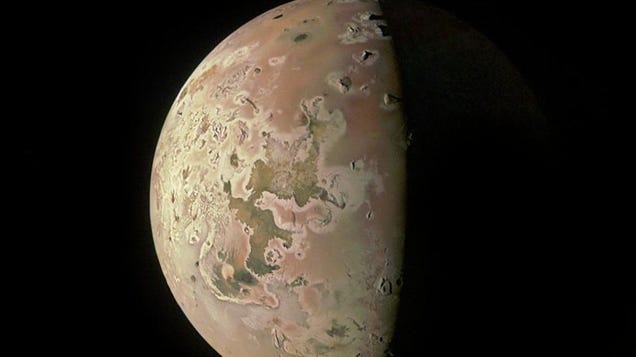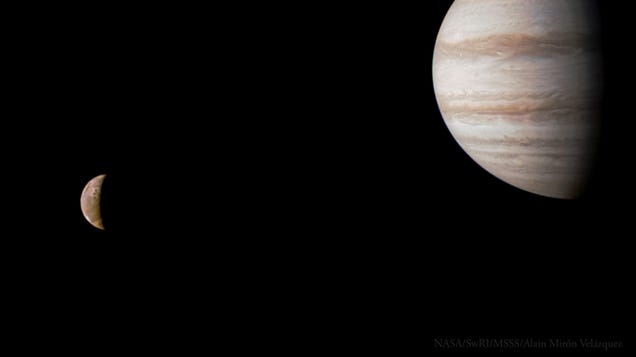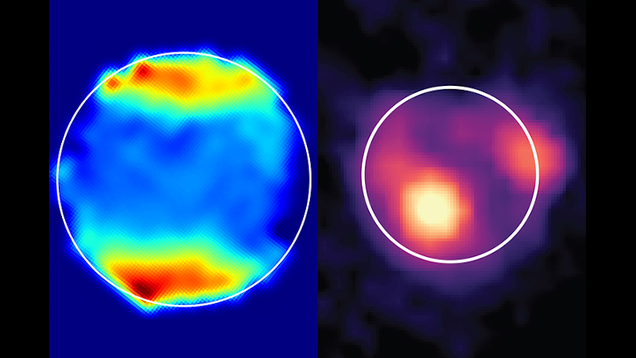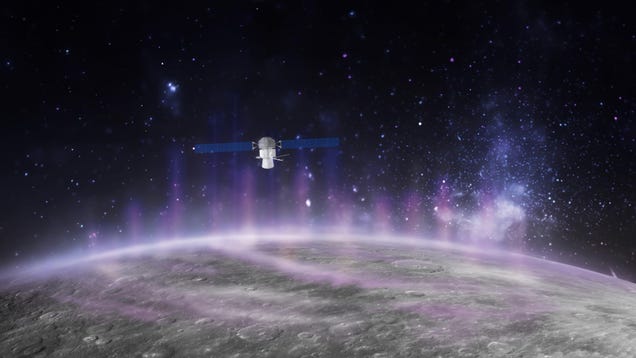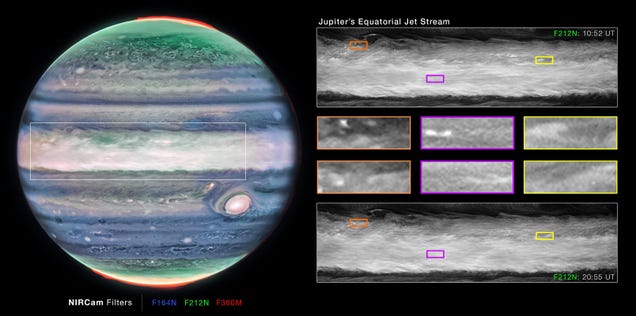
In July 2022, the Webb Space Telescope detected an intense jet shooting across the equator of Jupiter, the largest planet in our solar system. The jet is traveling at about 320 miles per hour (515 kilometers per hour) and is about 25 miles (40 km) in altitude, corresponding to Jupiter’s lower stratosphere.

